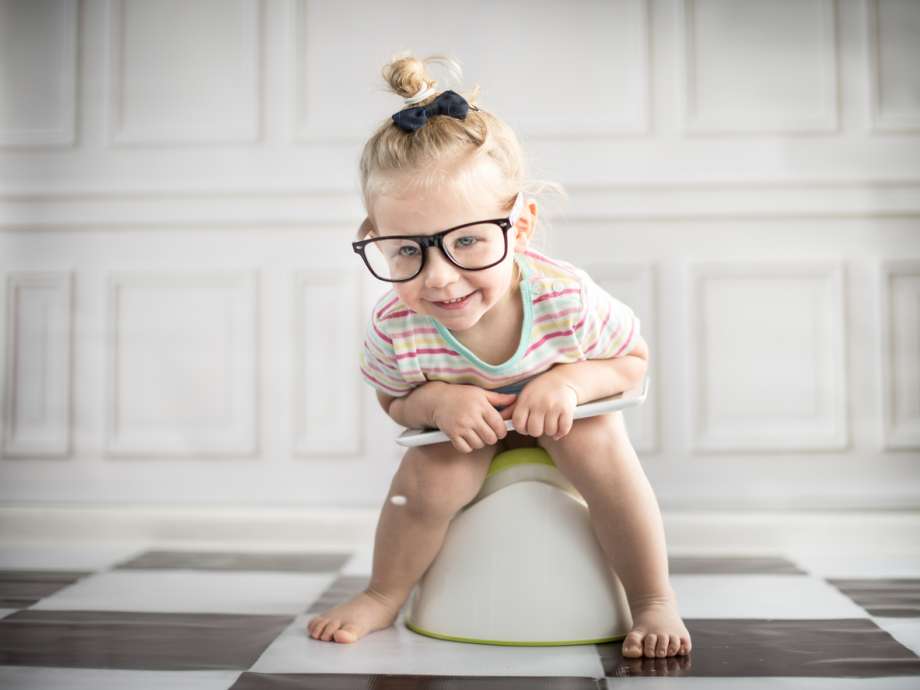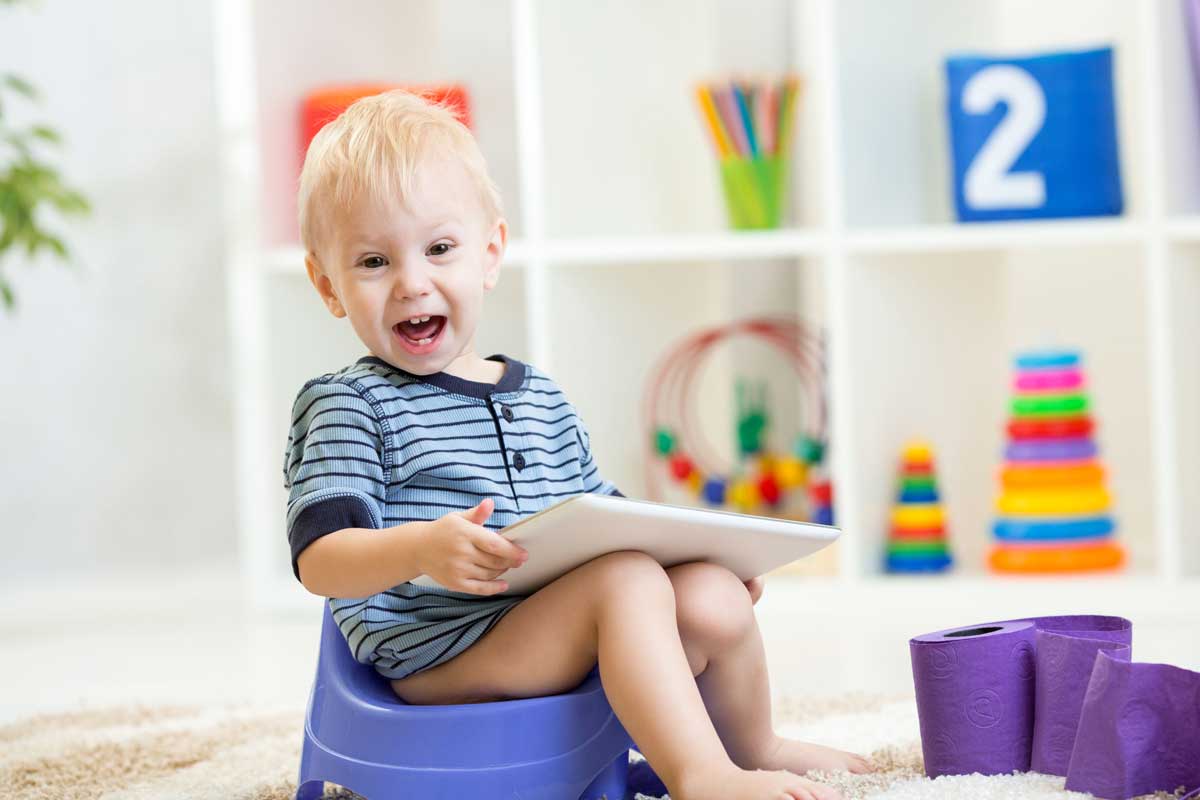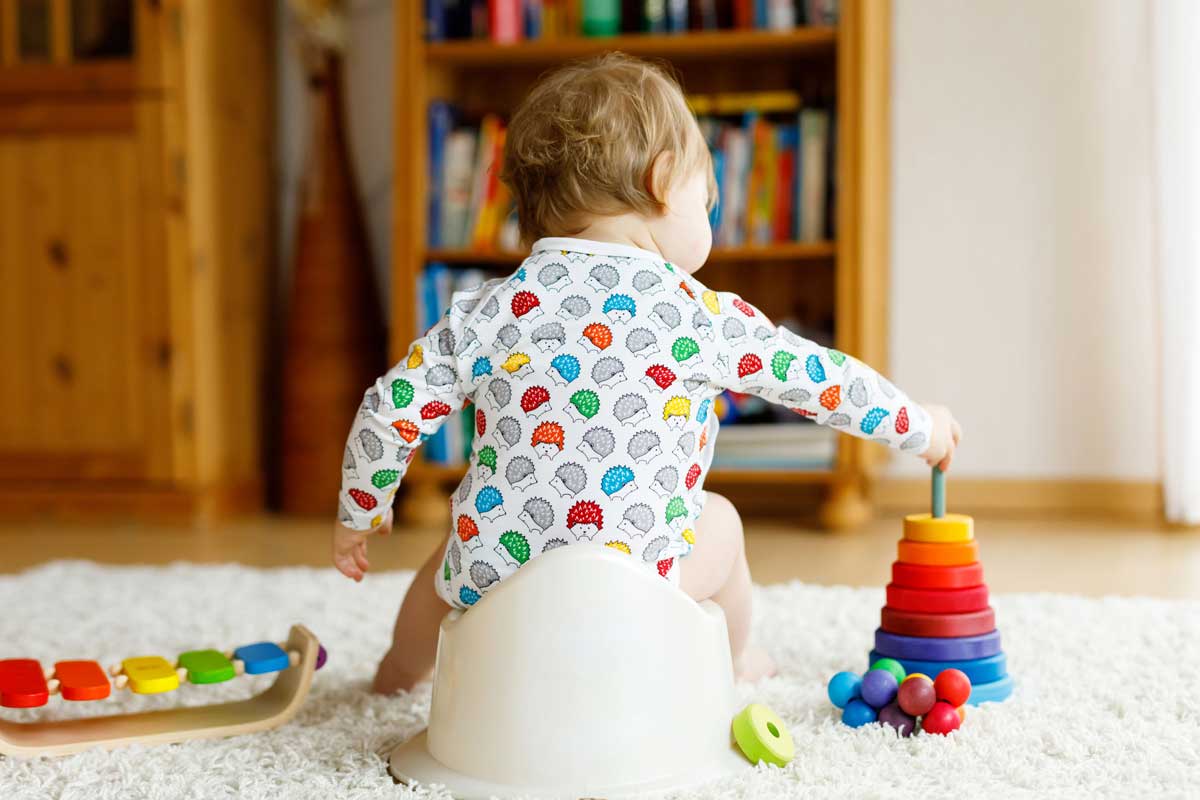Potty Training Tips for When Your Kid Won't Go

Editor’s Note: We know raising kids can be hard. That’s why we’re dedicated to making your life easier with the latest and greatest parenting advice and products. We wanted to let you know that if you chose to purchase one of the items featured in this post, we may receive a small commission for it.
Fun Fact: Parents in the U.S. potty train their children later than many others across the globe. Parents in China, for example,start training as early as a few days old. They dress them in pants that are open at the bottom and hiss or whistle when babiesrelieve themselves. Babies eventually pair the sound with the act and begin to go on command.
So why are Americans so late to train, often starting between two and three years old? Children move in and out of stages of "readiness" for potty training. They may be physically ready to "hold it" until they find an appropriate place to go, but fear, anxiety, issues with independence or wanting to be in control can get in the way as your little one starts to mature and become his or her own person separate from Mom or Dad.
Signs Your Child Is Ready

Kids give off pretty big signs when they're ready to potty train, and it's often not a good idea to push them to train before you start seeing a bunch of these indicators.
- Waking up with a dry diaper
- Showing interest in the toilet or potty
- Letting you know when he or she has a wet or soiled diaper
- Letting you know when he or she is going pee or poop
- Talking about the potty or bathroom functions
- Going to a corner or stopping an activity and squatting to poop
- Expressing diaper discomfort
Signs Your Child May Not Be Ready
There are also some pretty big signs they're not ready.
- Crying when you mention potty training
- Yelling "NO" when you ask them to use the potty
- Delaying using the potty and having an "accident" right after trying
- Withholding pooping because he or she doesn't want to use the toilet
The Mind Game of Potty Training (and Parenting in General)
Positive reinforcement, peer pressure, modeling behaviors, internal motivation—these basic psychology concepts really come in handy when deciphering how to get your little one to comply. Kids look to their parents for behavioral cues. Use this to your advantage by modeling behavior to show your child appropriate toilet behaviors. If possible, let your child watch their same-gender parent use the bathroom. Positive peer pressure—knowing that older siblings or friends are already using the toilet and wearing underpants—is another big motivator.
"Positive Reinforcement is probably the most effective method of shaping behavior," says Rita Eichenstein, PhD, author of Not What I Expected. "Children who are praised and are acknowledged for their efforts are more likely to continue to want to do those behaviors."
Some parents offer candy as reinforcement for going potty, though praise, self-esteem, stickers on a chart or the promise of a prize work just as well. For budding preschoolers, the idea of pleasing parents and getting praise may be enough motivation to tackle this new challenge.
More: Interactive Potty Training Chart
Negative reinforcement or punishment, on the other hand, is not advised. Shaming a child or yellingfor accidents —or "on purposes"—will only set you both back. Whether these are true potty mistakes or attempts to see what happens, the more negative attention you give these behaviors, the more they get reinforced. Continued setbacks may be a sign you should put training on hold and try again later.
Above all, take heart. If your child is physically ready, it will happen. Just stay positive and take breaks when you and your little one need it!
Handy Tricks

Here are some potty training tips when your kid won't go:
- For boys, place a wadded up piece of toilet paper in the toilet and see if he can hit the target with his stream.
- Keep a portable potty and wipes in the trunk of your car. You can use this to keep on a potty schedule when you're out and without a bathroom.
- Go on a special outing together to pick out underpants.
- Create a chart of clean underwear days. After a pre-determined number of successful days, have a celebratory potty party.
- Run the faucet while your child is on the potty to induce the urge to pee.
- Visit the potty after each snack or drink, when they wake up in the morning and after naps,and at bedtime.
- Visit the potty after running, climbingor jumping activities that stimulate the urge to pee.
- Place a potty chair where your child is most comfortable—in the bathroom, their bedroomor by the TV.
- Let your child go naked outdoors if possible to experience the sensation that comes when they pee.
- Have potty songs you sing while using the potty, or let your child ring a bell before they go to pair an auditory cue to "going."
More: Expert Advice: Backsliding on Potty Training
The Best Potty Training Books for Kids
There are scores of potty training books, including some that feature favorite characters to motivate kids to ditch the diapers, but these have stood the test of time:
- Once Upon a Potty (different books for girls and boys)
- Everyone Poops
- The Princess and the Potty
- Flush the Potty (with a "flush" button)
The Best Potty Training Videos
Videos to encourage your child to sit on the potty—with or without diapers—as he or she watches. Watch together to show you're interested, too!
- Potty Power - for Boys and Girls
- Sesame Street - Elmo's Potty Time
- Go Potty Go! Potty Training for Tiny Toddlers
Potty Power deserves a special shout-out for reluctant trainers. Whether it's the way the host stares unblinkingly at the camera as she speaks, or the catchy tunes you'll find yourself singing a decade later, the superhero themeor the animated stories, many parents report success after months of frustration.
"Someone recommended the Potty Power video to us and it worked unbelievably well," says Doug, a father of two boys and a girl. "We tried other methods but that video resonated the most because of its super hero angle. Walking and talking are amazing milestones, but when you no longer have to change diapers, it's a milestone for the parents," he added.
The most important thing to remember is to take a deep breath and have patience. Some kids just take a little longer to get used to the idea of going to the potty.